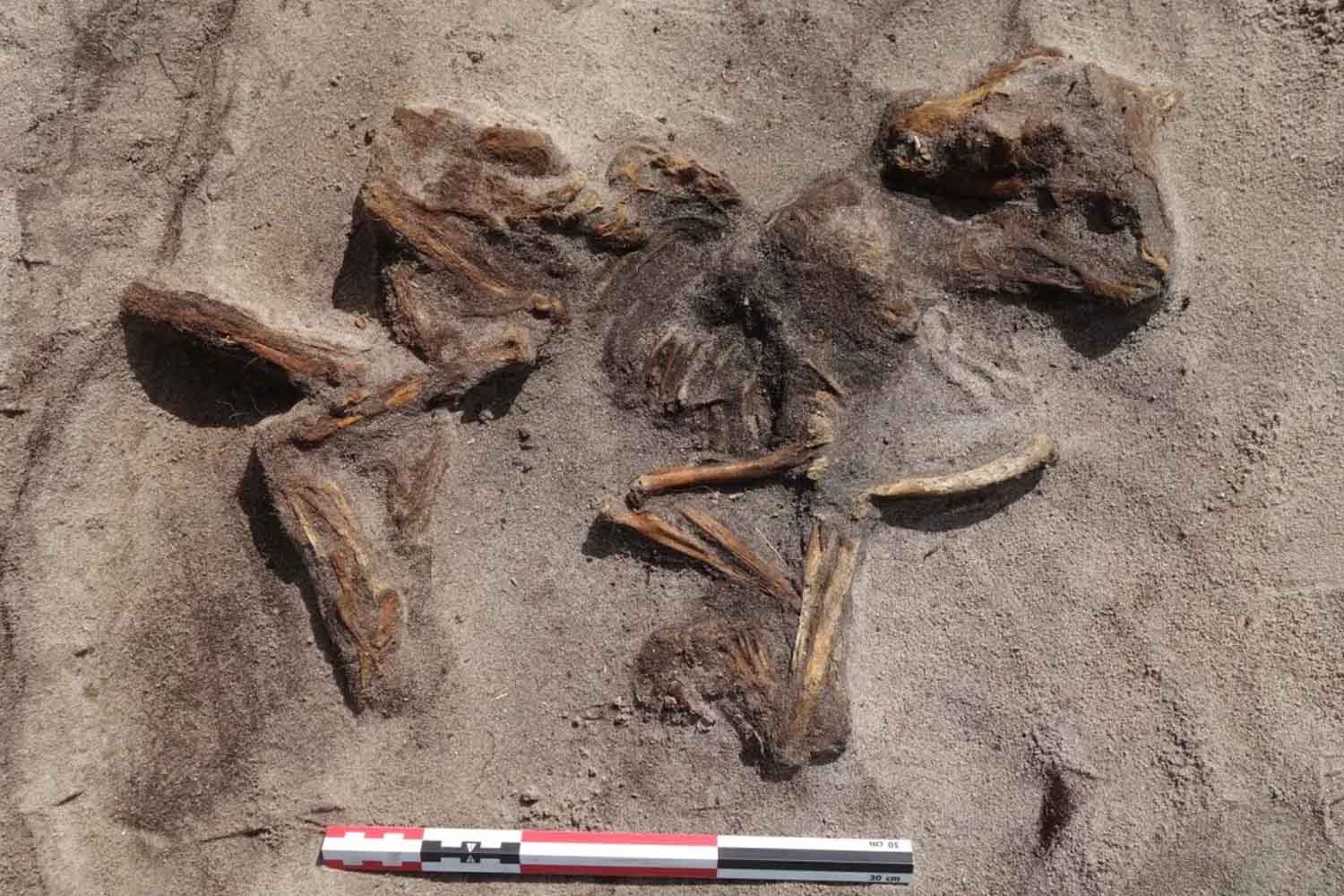A rare Viking burial on Senja Island reveals a powerful connection between humans and animals, offering insights into Viking society, spirituality, and the role of women.

Sometimes, it only takes a signal – the sound of a metal detector in a field on the Norwegian island of Senja – to bring back stories that time nearly erased. Just beneath the surface, only eight inches (20 centimeters) from the ground, a rare Viking burial was uncovered: a woman, likely of high rank, carefully placed inside a burial boat. At her feet, the body of her dog. An image that, even after over a thousand years, still has the power to move deeply.
What began as a seemingly small discovery – two metal oval brooches and fragments of human ribs – soon revealed itself as one of the most evocative testimonies from the Viking era, offering us far more than words could describe.
The excavation was led by archaeologists from the Arctic University Museum of Norway following an intervention for a garage expansion. It was then that the full scope of the find became clear: a boat, over 16 feet (5 meters) in length, perfectly integrated into the calcareous soil, contained the woman’s body along with numerous objects.
According to archaeologist Anja Roth Niemi, this is an elite burial. Not everyone was buried in a boat; it was an honor reserved for only a few, often just one or two people per generation. The objects found beside the body – including brooches intricately decorated with silver wire, amber beads, bone, a pendant, a whetstone, a sickle, and textile tools such as a whale bone weaving sword – tell us much about the deceased’s role.
She was likely a key figure in her community, responsible for managing the household, textile production, and agricultural activities – tasks traditionally assigned to the most influential women in Viking families.
A gesture of love, affection, and spirituality that survives through time
However, it is the presence of the dog, positioned with clear attention at the woman’s feet, that makes this find extraordinary. It was not a common practice, yet the gesture is clearly intentional. Niemi believes this is a demonstration of the profound emotional bond between humans and animals, a connection that already existed a thousand years ago and was recognized as something important.
“There are stories of people doing everything they could to save their animals,” the archaeologist explains. “Even then, the relationship with dogs was much more than mere utility.” In Viking myths, dogs accompanied souls on their journey to the afterlife. It is thus possible that the animal was seen as a spiritual guide or companion for the woman’s final crossing of life.
A deep, powerful connection that defies the centuries and still speaks to us today, with the tenderness of things that are true.
The preservation conditions were exceptional, thanks to the presence of marine deposits rich in limestone, which slowed decomposition. Smaller bones, such as those from fingers and feet, have disappeared, but larger bones are well preserved, particularly where they were in contact with metals that inhibit bacterial growth.
Scientists are now analyzing the skeletal material to reconstruct the woman’s life: her habits, any signs of malnutrition, and the possibility that she lived in different places during her childhood and adulthood.
Such studies allow us to rediscover the individual stories hidden over the centuries, while also gaining a better understanding of the society of the time.
Viking women: more than just mothers and weavers
For a long time, it was believed that Viking women had secondary roles. But recent discoveries have begun to challenge this idea. Burials containing weapons, such as the famous one in Birka, Sweden, have revealed that women too were warriors. Not only that, they were explorers, landowners, merchants, religious leaders, and central political figures.
Even in the case of the burial on Senja Island, the grave goods make it clear: the woman held power and responsibility – in weaving, agriculture, and organizing daily life. In a culture where symbolism was paramount, every object placed in the grave was a clear signal.
The presence of the dog strengthens this interpretation: the value of an affectionate bond recognized as an integral part of the person’s identity, even in death.
Yet, the work is not finished. A short distance from the first discovery, archaeologists found another oval brooch, a concrete clue pointing to the presence of a second burial. This could be part of a larger burial area, constructed along the low sandy ridges near the coast, where the sand uniquely preserves remains.
Before proceeding with new excavations, the team plans to use underground detection technologies to explore what lies beneath the soil without damaging it.
One thing is certain: this discovery has opened a window into the past, showing us how memory, affection, and spirituality can survive through the centuries, telling us stories that still move us today.
